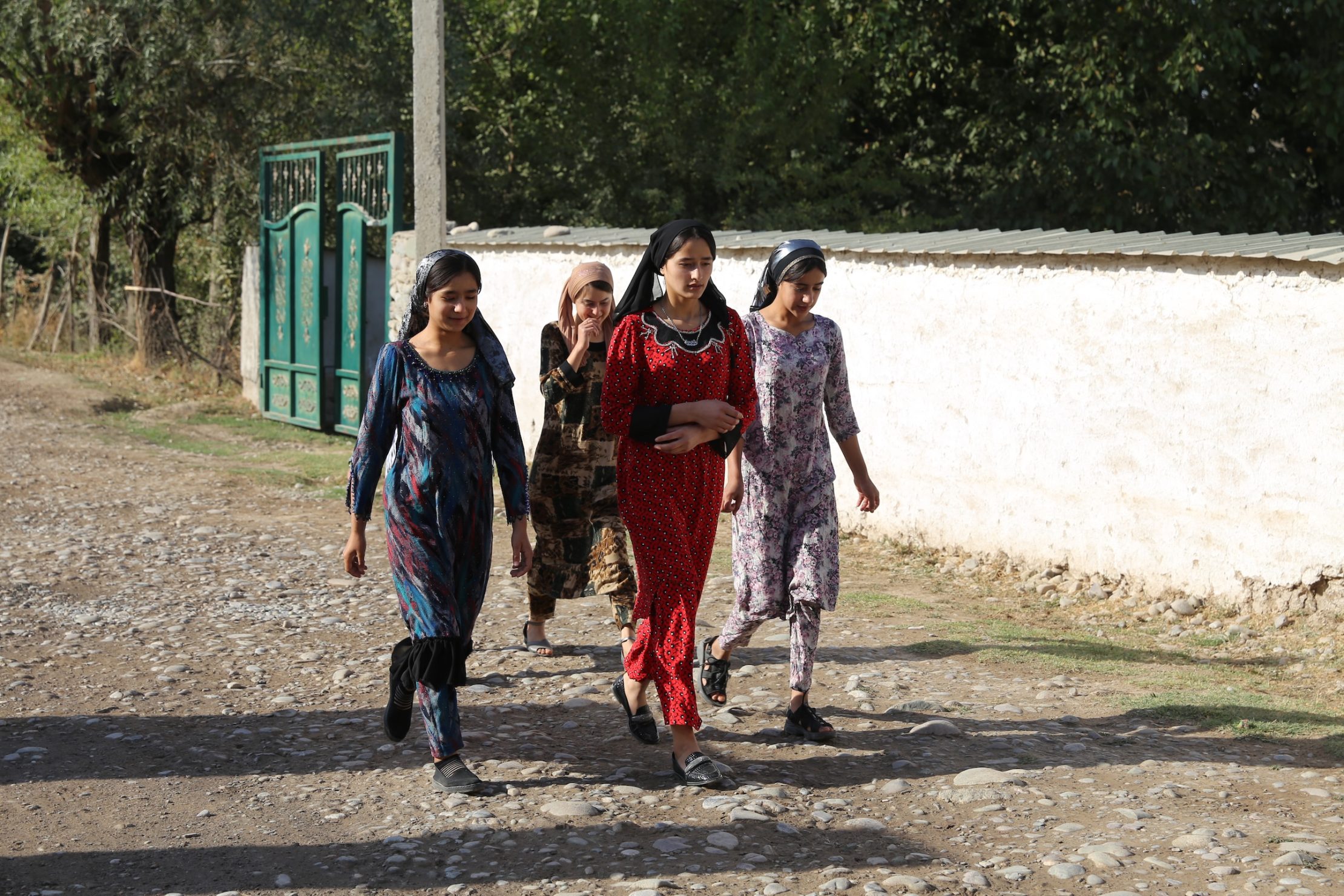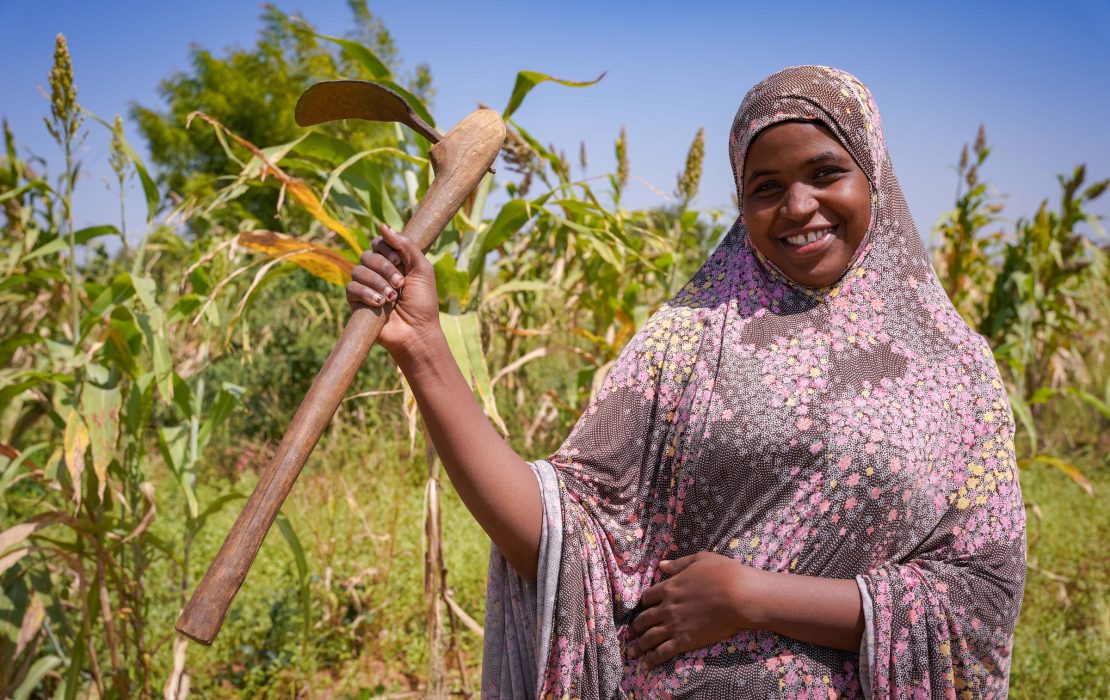
Photo: UNDP Tajikistan
In May 2021, Tajikistan was hit by torrential rains that triggered floods, landslides, and mudflows across much of the country. The worst impact was felt in the Tebalay River watershed, home to more than 300,000 people, where a deluge of uncontrolled water tragically led to loss of life and significant infrastructure damage.
A steep hilly area in the Khatlon province in the southwest of the country, the Tebalay River watershed has become dangerous terrain with loose soil and limited vegetation due to deforestation and overgrazing. As the impacts of climate change ramp up and extreme weather events become more frequent and intense, these vulnerabilities are being exposed and magnified. As a result, communities in the region are living in a precarious state.
Despite having a negligible contribution to global greenhouse gas emissions, Tajikistan is highly vulnerable to the impacts of climate change. As a lower middle-income country, with a landlocked mountainous geography, the country’s economy depends on natural resources and climate-sensitive sectors like agriculture, considerably increasing its vulnerability. Yet, awareness about the risks associated with climate change and the importance of adaptation remains low among the public.
The country now needs to secure much-needed financial resources to take quick action to reduce vulnerability and increase resilience. Otherwise, it will experience significant economic losses, humanitarian challenges, and environmental degradation as climate-related disasters become more frequent, intense, and unpredictable.
Another flood season in the Tebalay watershed area likely means devastating consequences. With financial assistance from Japan, UNDP is working with local authorities and communities in the area to improve the management of the watershed and its resources, reduce the impact of extreme weather events, and prevent hazards.
The initiative is working to establish a roadmap for future interventions in Tajikistan as well as other countries with limited resources and high vulnerability to climate impacts.

Photo: UNDP Tajikistan
Photo: UNDP Tajikistan
Assessing risk and vulnerabilities
A crucial step towards increasing resilience and adaptive capacity is understanding where the biggest vulnerabilities and risks are. Having this information is key to adopting adequate measures to build resilience.
Many areas in the Tebalay watershed region are prone to flooding and landslides and require immediate attention. With UNDP’s support, a detailed assessment of the region has been carried out, using satellite imagery to map potential risk zones as well as safe havens that can be used in emergencies. To compliment this work, an early warning system is being developed to improve flood response times, based on techniques that have been put in place in Japan.
Photo: UNDP Tajikistan
Photo: UNDP Tajikistan
Developing an integrated and inclusive action plan
The climate crisis is a crisis of interconnected systems. Since its impacts reach every aspect of our society, the way in which we respond to the climate crisis needs to be equally comprehensive, integrated, and inclusive.
UNDP is facilitating local authorities in the watershed area to develop an integrated management plan that will help reduce the incidence and impact of flash floods, landslides, and mudflows on local infrastructure, ecosystems, and agricultural livelihoods. The integrated plan seeks to manage all human activities and natural resources together, across all sectors, while considering the environmental, societal, and economic contexts. Importantly, a wide cross-section of stakeholders – from civil servants to the private sector to local communities – is being consulted and involved in the development of the plan, working to reach a consensus around the necessary interventions.
The plan also focuses on gender issues, which is particularly important as women and men have different needs and vulnerabilities when it comes to climate impacts. They also can hold different parts of communal knowledge and capacity that is essential for strengthening resilience.
Photo: UNDP Tajikistan
Photo: UNDP Tajikistan
Investing in infrastructure
Resilient infrastructure is another key component of meeting the challenges raised by climate change.
Under the Japan-funded initiative, several infrastructure investments are being made to strengthen the resilience of local communities in the area. Heavy machinery was purchased to help with canal cleaning and building flood protections. In addition, galvanized wire nets and concrete blocks will be deployed to strengthen the river’s banks while pastures with high erosion risk will be fenced to prevent further degradation.
Photo: UNDP Tajikistan
Photo: UNDP Tajkistan
Protecting livelihoods
Just transition needs to be at the centre of efforts to reshape societies to be low-carbon and climate-resilient.
Many people living in in the Tebalay watershed area depend on its resources – water, pastures, lands, and forests – for their livelihoods. Helping them manage the resources sustainably and develop ownership over the long-term sustainability of the area is essential to building resilient communities that can better withstand the hazards and shocks caused by climate change. Additional equipment provided under the Japan-funded initiative will help improve irrigation and sustainable agriculture practices.
Photo: UNDP Tajikistan
Overall, approximately 75,000 people in the region are expected to benefit from the actions under these four pillars, through safer habitats and improved agriculture-based livelihoods, while 125,000 will benefit indirectly from lower risk to being exposed to flash floods and mudflows. But many in Tajikistan, and in other countries with similar conditions, remain at risk.
In October 2021, Tajikistan submitted its updated NDC, setting an unconditional emissions reduction target of 30-40 percent compared to 1990 levels by 2030 and defining 27 lines of action on adaptation, across five crucial sectors. Considering its national circumstances, these are ambitious goals that pave the way for the country’s low-carbon and climate-resilient development.
Only by securing international support and climate finance for initiatives that continue to reduce vulnerabilities and increase the country’s resilience with investments in research, planning, infrastructure, and livelihoods, can we ensure that Tajikistan reaches its goals.
***
Japan considers that the climate crisis is a threat to all humanity and, in cooperation with UNDP, leads countries to accelerate their climate action.
In 2021, UNDP launched a new phase of Climate Promise – From Pledge to Impact – aimed at translating NDC targets into concrete action. Japan is the largest supporter of this phase and joins longstanding partners such as Germany, Sweden, the European Union, Spain, and Italy and new partners such as the United Kingdom, Belgium, Iceland, and Portugal to accelerate these efforts.

